Ranunculus abortivus
One of the native buttercups with tiny yellow flowers and narrow pointy stem leaves
Ranunculus abortivus small-flowered crowfoot
This common biennial species is also called the kidneyleaf or littleleaf buttercup. The yellow flowers of this member of the buttercup family are tiny and inconspicuous only about ¼ inch in diameter. Although there are other small-flowered buttercup species in eastern United States, this is the most common. It is easily overlooked because it is not a showy species. Thus it belongs in my “be it every so humble” category. Look carefully for this tiny flower along trails.
The 5 yellow petals of this species are very small, often reflexed (bent back) or drooping downwards. Each stem can bear up to 50 of these flowers, but the actual number is usually fewer. There are also 5 green sepals. In the center is a cluster of green carpels, and a ring of stamens with yellow anthers. Like other buttercups, this species has bushy stamens. A variety of insects feed on the nectar of this little flower and help with pollination.
Although the hairless stems are slim, the plant can grow from 6-20 inches tall. The basal leaves are roughly kidney-shaped and often roughly toothed. These leaves have petioles up to 3 inches long. The cauline leaves are alternate and slimmer and often divided into 3 to 5 lobes, especially towards the bottom of the stem. The leaf pattern is distinctive and makes it easy to identify this species.
The small-flowered crowfoot normally grows in woods or damp thickets, but does well in disturbed areas where it can become a bit weedy. The species can bloom throughout the growing season spring to early summer. It is a biennial or short-lived perennial plant. It is known to grow throughout the northern, eastern and central parts of North America, though populations in the Southeast and Midwest tend to be scattered. It is found in every county of Pennsylvania.
Native Americans ate the leaves and used the plant for several medical conditions, but most buttercups are toxic and thus consumption should be avoided.
Habitat & Range
Common in rich low woods, low fields and moist waste places. Prefers partial sunlight and moist to mesic conditions.
Present throughout the state.
Range: Throughout the northern, eastern, and central parts of North America, though populations in the Southeast and Midwest tend to be scattered.
| EMP: | FACW |
|---|---|
| NCNE: | FAC |
Phenology
Flowers early April through June.
Characteristics
Flowers solitary, ¼″ across; 5 yellow pale petals, 5 green spreading or reflexed sepals longer than petals; numerous stamens with yellow anthers
Leaves
Basal leaves simple, rounded to reniform on long petioles; crenate or with shallow lobes; wither off as the plant matures
Cauline leaves simple, alternate, deeply divided or parted; uppermost leaves often sessile and bract-like
Stem erect, glabrous
Fruit small, dry achenes in a rounded cluster; glabrous; topped with a tiny hooked beak; 1.5-2 mm long
Height 6-20″
Plant Codes
S-rank: S5 (Secure)
G-rank: G5 (Secure)
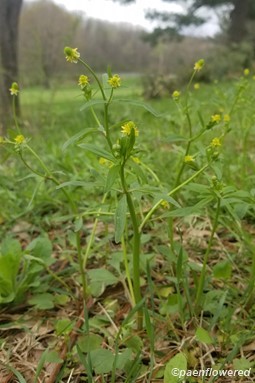
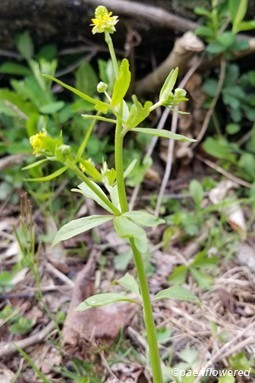
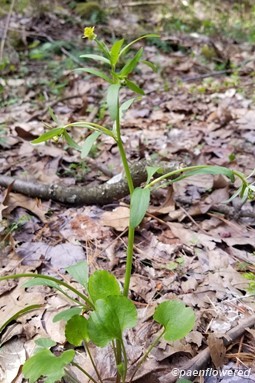
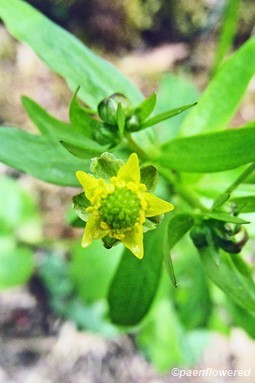
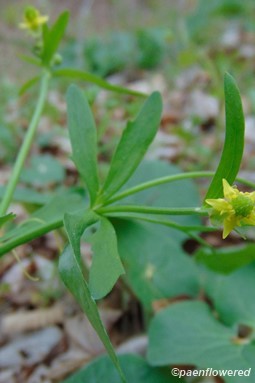
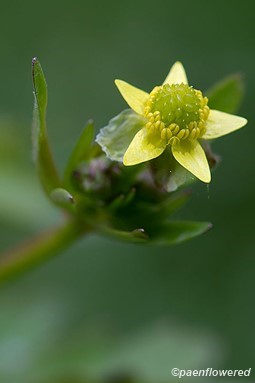

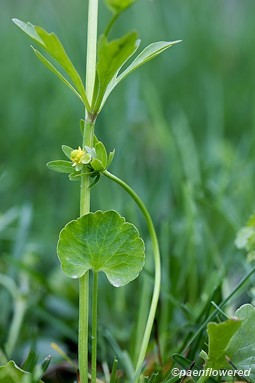
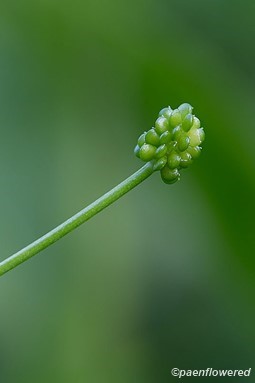









Comments
Have you spotted this plant in your area? We'd love to hear about your experience! Share your comments or questions about the plant below. Comments are moderated before posting.